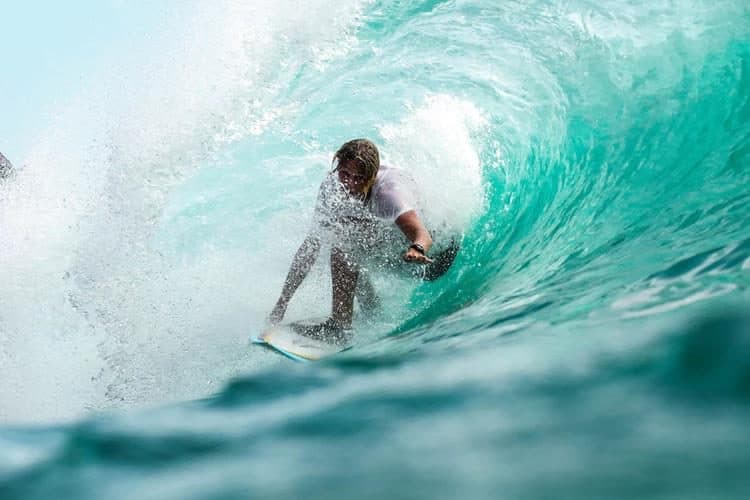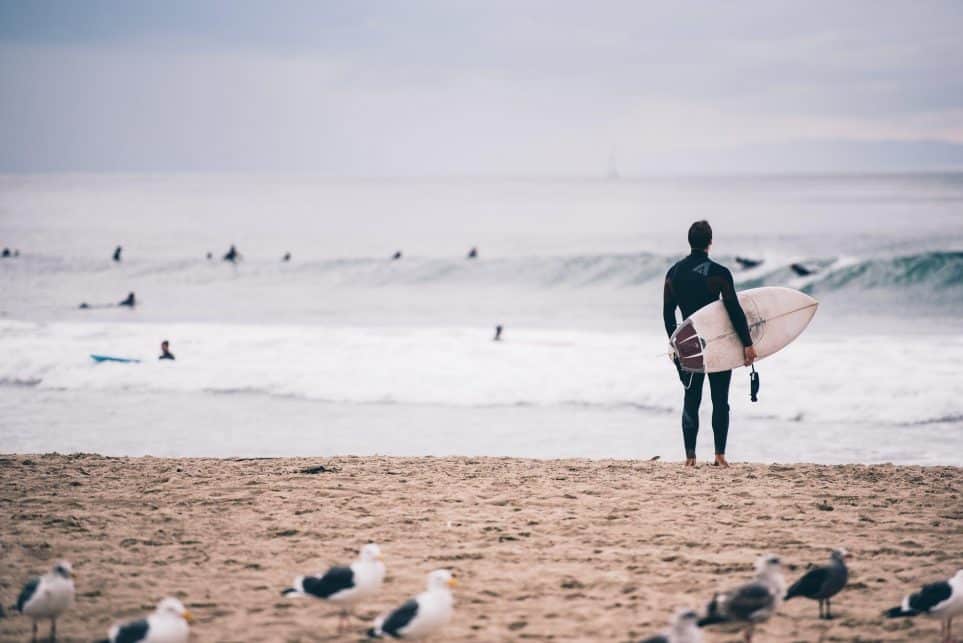When you think about it, the question, “Is surfing dangerous?” is kind of a paradoxical inquiry. Yes, surfing is definitely dangerous, but it’s just like any other extreme sport. However, there are ways to do it and things to keep in mind that can make it less dangerous. In a nutshell, there are several dangers in surfing but there are also several ways to mitigate that risk as much as possible.

Here are some examples of surfing risks and some steps you can take to stay safe while you are riding the waves. Watch out for these situations:
You
Yes, that’s right. You yourself can actually be a liability when it comes to whether you have a poor surfing experience or not. When dealing with a sport that has a degree of risk, it is always important to be prepared. This means staying in shape. This means being able to read the waves. It also means identifying the lineup. One of the cardinal rules of surfing has always been to never underestimate the power of the ocean. Thus, you should realize that even professional surfers have to guard against such things as being in the midst of a “hold down”. More on that later, of course.
A Big Wave
Guarding against a big wave is important, because some of them are pretty nasty. The key is to ensure you are not surfing in conditions that you are above your ability. Thus, if you are a beginner, you should make sure you only surf on waves that are best for your skill levels. You can ask a more experienced surfer what areas of a beach are best suited for beginners. Indeed, in some places there are even surfing instructors who can recommend various areas. Wiping out on your board will always happen, but learning which waves you can handle can help you avoid puncturing your eardrums, getting a concussion or even being knocked unconscious.
Unforeseen Objects
Again, the best the way to mitigate this risk is to ask one of the local surfers what they know about these waves if this area is unknown to you. Additionally, just simply keeping a quick eye out before you venture out into the sea can make a big difference. Boulders and rocks can pack a nasty punch and can even be fatal in some cases. Even if there are none of those to contend with, if you are surfing in an area that has a really shallow reef or sea bottom that is something else you should look out for. Unless you are an extremely experienced surfer, it is probably best to surf with a helmet or some booties for extra protection, some extra shallow spots are even surfed in wetsuits for extra protection, even though the water is warm.
Surfing in Colder Climates

One very underrated dangers in surfing pastime would be doing it in colder climates. Let’s face it, though. Not everyone can afford to go to a warmer climate. However, the dangers of surfing in cold climates are very real. One of the biggest concerns would be a phenomenon known as “cold feet.” Naturally, this malady can lead to a lot of problems such as having numb feet and not being able to feel your board. This can lead to more wipeouts. However, most surfers know how to prevent cold feet in the water. One of the ways they start to mitigate this risk would be by wearing a solid wetsuit. When they couple that with a set of neoprene booties to wear around the feet and ankles, they are sure to be able to surf even in a colder area.
Dealing with Marine Life
Perhaps one of the most feared members of the “true locals” would have to be the marine life. It doesn’t matter whether you are an experienced surfer or a beginner, if you happen to spot a great white shark it is best to exit the water immediately. Other things you can do would be to avoid surfing at times that sharks are more active, such as at night or dawn. If you are bleeding, avoid the water because it will attract the sharks. Avoid wearing shiny jewelry because the reflection has been known to attract sharks. Finally, try to avoid murky water because a lot of sharks could mistake you for a seal or a large fish.
There are also some other marine animals such as stone fish, sea snakes, jellyfish etc…that also present dangers in surfing. These depend on the location so it is best to ask the locals what if any of these are present.
Follow all of these steps and you are sure to have an enjoyable (and safe) surfing experience, whether you are a beginner or an expert.

